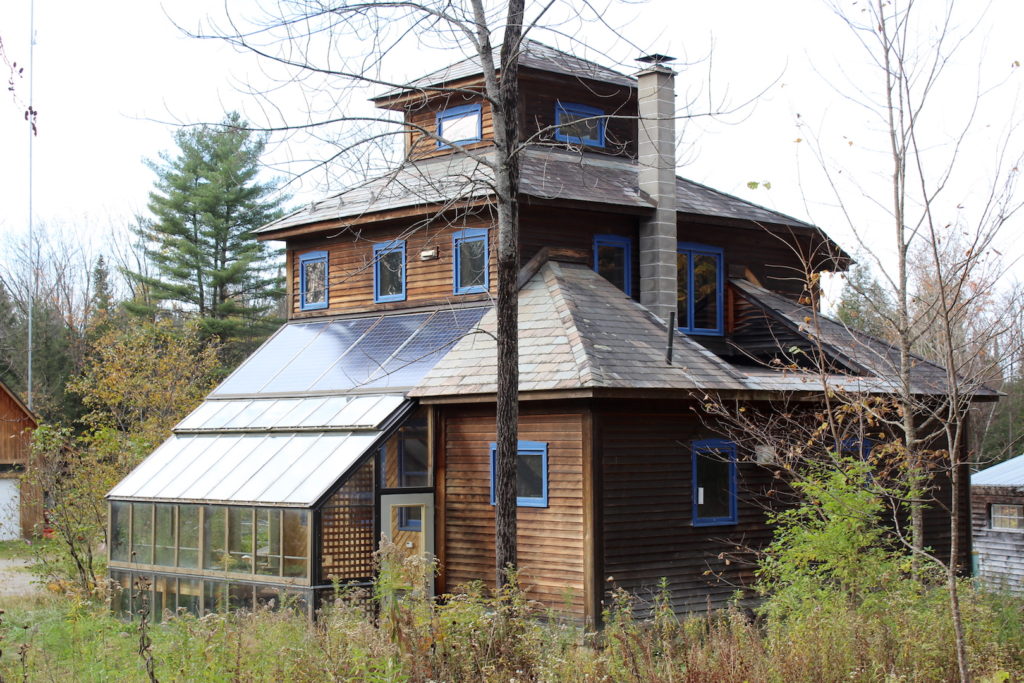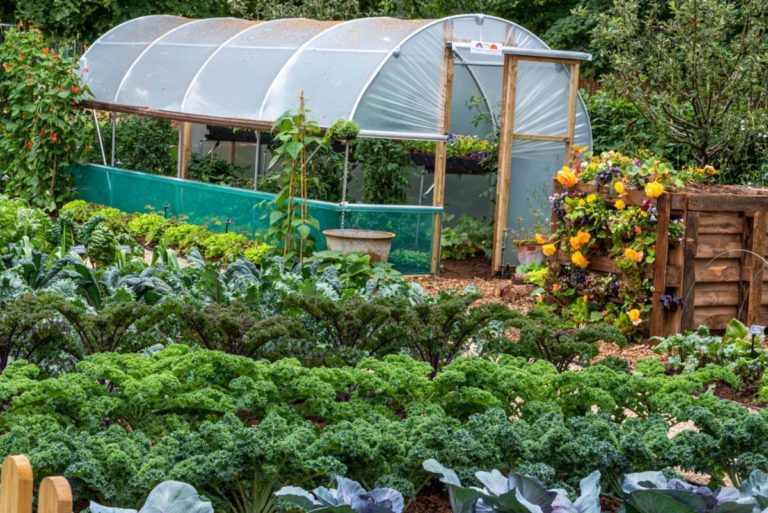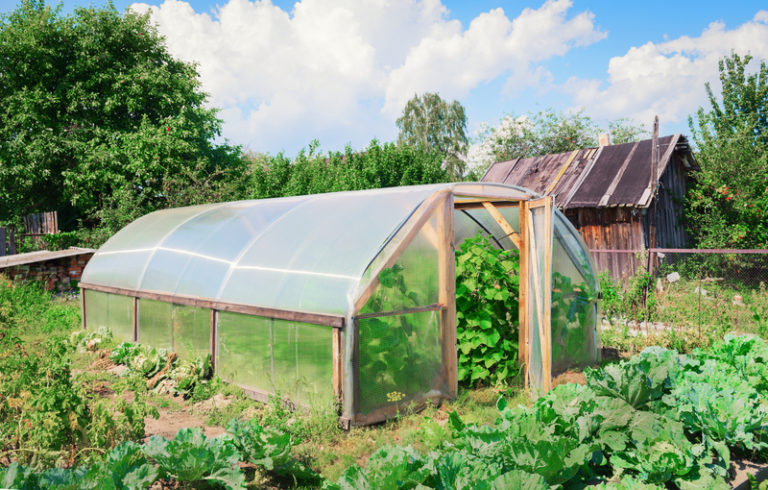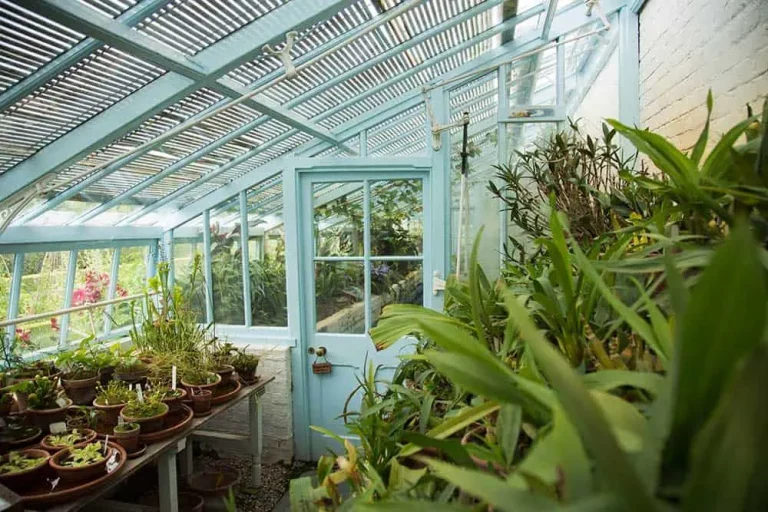Off-grid permaculture techniques are important for creating a self-sufficient homestead that relies on natural ecosystems and renewable resources.
These methods help you grow healthy and sustainable food systems while minimizing your environmental footprint.
With the right combination of strategies, you can establish an off-grid homestead that flourishes with biodiversity and abundance, providing a sustainable source of income for your family or community.
By implementing these essential techniques into your farming practices, you’ll be well on your way to achieving self-sufficiency without compromising our planet’s delicate balance.
Composting
Create a compost pile using a combination of vegetable scraps, grass clippings, and wood ash to produce a nutrient-rich fertilizer for your plants.
To create a compost pile, you’ll need a combination of vegetable scraps, grass clippings, and wood ash.
Start by gathering a variety of vegetable scraps, such as carrot tops, potato peels, and lettuce leaves, as well as grass clippings from your lawn.
Mix these materials together in a large pile, and add a handful of wood ash to the top.
Wood ash is a natural source of potassium, which is essential for plant growth, and it helps to balance the pH level of the soil.
As the materials break down, the compost pile will heat up, and you’ll need to turn it regularly to ensure proper decomposition.
After a few months, the compost will be ready to use as a fertilizer for your plants.
This natural fertilizer will provide your plants with the nutrients they need to thrive, and it will help to improve the overall health of your soil.
By using compost in your off-grid permaculture system, you’ll be able to create a self-sufficient and sustainable garden that will produce healthy, vibrant plants for years to come.
Rainwater Harvesting
Install a rainwater harvesting system to collect and store rainwater for irrigation and other household needs.
Rainwater harvesting is an essential component of off-grid permaculture, as it provides a reliable source of water for irrigation and other household needs.
By collecting and storing rainwater, you can reduce your reliance on municipal water supplies and minimize your water bills.
Rainwater is a natural and chemical-free source of water for your garden, which can help to promote healthy plant growth and reduce the need for synthetic fertilizers and pesticides.
Furthermore, rainwater harvesting systems can be designed to be aesthetically pleasing and integrate seamlessly into your landscape, adding both functionality and beauty to your property.
Above-ground storage tanks are the most common type of rainwater harvesting system and are relatively easy to install.
They can be placed on a hillside or flat area and are usually made of food-grade materials that are safe for irrigation.
Underground storage tanks, on the other hand, are buried beneath the ground and can be more difficult to install, but they provide a more discreet storage solution.
Cisterns are another option and can be made from a variety of materials, including concrete, plastic, or metal.
They can be placed above or below ground and are often used for larger-scale rainwater harvesting applications.
Regardless of the type of system you choose, it’s important to ensure that it is properly installed and maintained to ensure optimal performance and longevity.
This includes regular cleaning and inspection of the gutters, downspouts, and storage tank to prevent clogs and contamination.
You’ll need to consider the size of your rainwater harvesting system based on your specific needs and the amount of rainfall your area receives.
With the right design and maintenance, rainwater harvesting can provide a reliable source of water for irrigation and other household needs, reducing your reliance on municipal water supplies and helping you to live off the grid with permaculture principles in mind.
Keyhole Gardens
Build a keyhole garden, which is a raised bed with a central composting pit, to grow a variety of vegetables and fruits in a small space.
Keyhole gardens are a brilliant solution for those looking to grow their own food in a small space, especially for those who are looking to live off grid and practice permaculture.
This type of garden is designed to be raised above the ground, allowing for better drainage and aeration, and can be built in a circular or keyhole shape around a central composting pit.
The central pit acts as a heat source, creating a warm microclimate that benefits the plants and helps to extend the growing season.
The raised beds provide better access to the soil for planting and maintenance, and the central location of the composting pit allows for easy access to compost to fertilize the plants.
With a keyhole garden, you can grow a variety of vegetables and fruits, such as tomatoes, peppers, lettuce, and berries, all in a small but thriving space.
This makes it an excellent option for those looking to live off the grid and practice sustainable gardening.
Perennial Polycultures
Plant perennial polycultures, which are multiple crops planted together in a single bed, to increase biodiversity and reduce soil preparation and maintenance.
Perennial polycultures offer a highly effective approach to off-grid permaculture.
This method involves planting multiple perennial crops together in a single bed, thereby increasing biodiversity and reducing the need for soil preparation and maintenance.
By intermingling various plant species, perennial polycultures create a resilient ecosystem that enhances soil health, improves water retention, and minimizes the risk of pest and disease outbreaks.
Furthermore, this technique enables growers to optimize their space by taking advantage of the different growth patterns and times of each crop.
For instance, nitrogen-fixing legumes like clover can be planted alongside fruit trees, providing an additional source of nutrients while also helping to suppress weeds.
Other perennial crops like berry bushes, asparagus, and rhubarb can be integrated into the mix, creating a thriving ecosystem that yields a diverse array of produce over multiple harvests.
By embracing perennial polycultures, growers can craft a thriving, self-sustaining food system that endures beyond the confines of a single growing season.
Sheet Mulching
Use sheet mulching, which involves layering organic materials such as cardboard and wood chips, to improve soil health and suppress weeds.
Sheet mulching is an excellent technique for improving soil health and suppressing weeds in an off-grid permaculture system.
This method involves layering organic materials such as cardboard and wood chips to create a thick, suffocating barrier that prevents weeds from growing and promotes the development of healthy soil microbes.
By placing a layer of cardboard on the ground, you create a weed-proof barrier that allows sunlight to penetrate and warm the soil, while the wood chips provide a slow release of nutrients as they decompose.
The decomposing organic matter can be turned into the soil to provide a boost of nutrients and improve soil structure.
Off-grid permaculture systems can greatly benefit from the use of sheet mulching as it promotes healthy soil and reduces the need for external inputs such as fertilizers and herbicides.
Hugel Mounds
Create Hugel mounds, which are raised beds filled with wood and other organic materials, to grow a variety of crops and improve soil fertility.
Hugel Mounds are a versatile and innovative technique for improving soil fertility and growing a variety of crops in an off grid permaculture system.
The concept is simple yet powerful: create raised beds by layering wood and other organic materials, allowing nature to do the rest.
By mimicking the natural process of decomposing wood, Hugel Mounds create a nutrient-rich environment that supports the growth of a wide range of crops.
To create a Hugel Mound, start by digging a hole about 2-3 feet deep and 3-4 feet wide.
Next, place a layer of logs or other organic materials, such as sticks, leaves, and grass clippings, at the bottom of the hole.
Cover the logs with a layer of soil and repeat the process, alternating between layers of logs and soil until the mound is the desired height.
Once the mound is complete, plant your chosen crops and enjoy the benefits of improved soil fertility and increased crop yields.
The wood layers in a Hugel Mound serve as a sponge, soaking up and storing water, which is then released to the soil and plants as needed.
As the wood decomposes, it adds a rich source of nutrients to the soil, creating a self-sustaining system that requires minimal input and maintenance.
With proper care and management, a Hugel Mound can continue to produce bountiful harvests for years to come.
Off grid permaculture enthusiasts will love Hugel Mounds for their simplicity, versatility, and self-sustaining nature.
By incorporating this technique into their permaculture system, individuals can improve soil fertility, increase crop yields, and create a more sustainable and productive garden.
Moreover, the process of creating Hugel Mounds can be a fun and rewarding experience, providing an opportunity for individuals to get their hands dirty and connect with nature.
Hugel Mounds are a game-changing technique for off grid permaculture enthusiasts who want to improve soil fertility, increase crop yields, and create a more sustainable and productive garden.
By creating raised beds filled with wood and other organic materials, gardeners can create a self-sustaining system that requires minimal input and maintenance.
The wood layers in a Hugel Mound serve as a sponge, soaking up and storing water, which is then released to the soil and plants as needed.
As the wood decomposes, it adds a rich source of nutrients to the soil, creating a closed-loop system that is both sustainable and productive.
The process of creating Hugel Mounds is not only practical but also a fun and rewarding experience.
The physical labor involved in building these mounds can be a great workout, while the resulting mounds provide an opportunity for individuals to get their hands dirty and connect with nature.
The unique shape and design of the Hugel Mounds create a visually appealing garden, adding an aesthetic element to the functional benefits.
By incorporating Hugel Mounds into their off grid permaculture garden, individuals can enjoy a thriving and sustainable food system while also enjoying the therapeutic benefits of working with nature.
Worm Towers
Build worm towers, which are tall, narrow beds filled with organic materials and worms, to produce a nutrient-rich vermicompost that can be used as a fertilizer.
Worm Towers are an innovative and highly effective way to produce a nutrient-rich vermicompost, which can be used as a natural fertilizer for your off-grid permaculture garden.
To build a worm tower, start by creating a tall, narrow bed using organic materials such as wood chips or straw.
Add a layer of wet newspaper or coconut coir at the bottom of the bed to provide a habitat for the worms.
Then, add a layer of food scraps such as vegetable and fruit peels, tea bags, and other nitrogen-rich materials.
Top the bed with a layer of moist soil and introduce red wiggler worms to the system.
As the worms break down the organic matter, they will produce a rich, nutrient-dense vermicompost that can be used to fertilize your off-grid permaculture garden.
Off-grid permaculture gardens rely heavily on natural, sustainable methods of fertilization, and worm towers are an excellent option for those looking to create a closed-loop system that maximizes efficiency and minimizes waste.
By using worm towers, you can create a self-sustaining ecosystem that not only provides nutrient-rich fertilizer but also helps to break down and recycle organic matter, creating a healthy and thriving garden ecosystem.
Worm towers can be built using locally sourced materials, making them an excellent option for those looking to reduce their carbon footprint and rely on local resources.
Swale Systems
Install swale systems, which are shallow ditches filled with water-loving plants and gravel, to capture and retain rainwater and improve soil moisture.
Installing swale systems is an excellent way to capture and retain rainwater, improving soil moisture and overall sustainability.
A swale system is a shallow ditch filled with water-loving plants and gravel that collects and filters rainwater, allowing it to soak into the soil.
This not only helps to reduce water runoff and erosion but also provides a habitat for beneficial insects and other wildlife.
The water-loving plants used in swale systems, such as cattails and horsetails, can provide a source of nutrient-rich mulch for your off-grid permaculture garden.
By incorporating swale systems into your permaculture design, you can create a more resilient and self-sustaining ecosystem that requires fewer inputs and produces more outputs.
Want More? Dive Deeper Here!
Hey there! If you’re the type who loves going down the rabbit hole of information (like we do), you’re in the right spot. We’ve pulled together some cool reads and resources that dive a bit deeper into the stuff we chat about on our site. Whether you’re just killing time or super into the topic, these picks might just be what you’re looking for. Happy reading!






